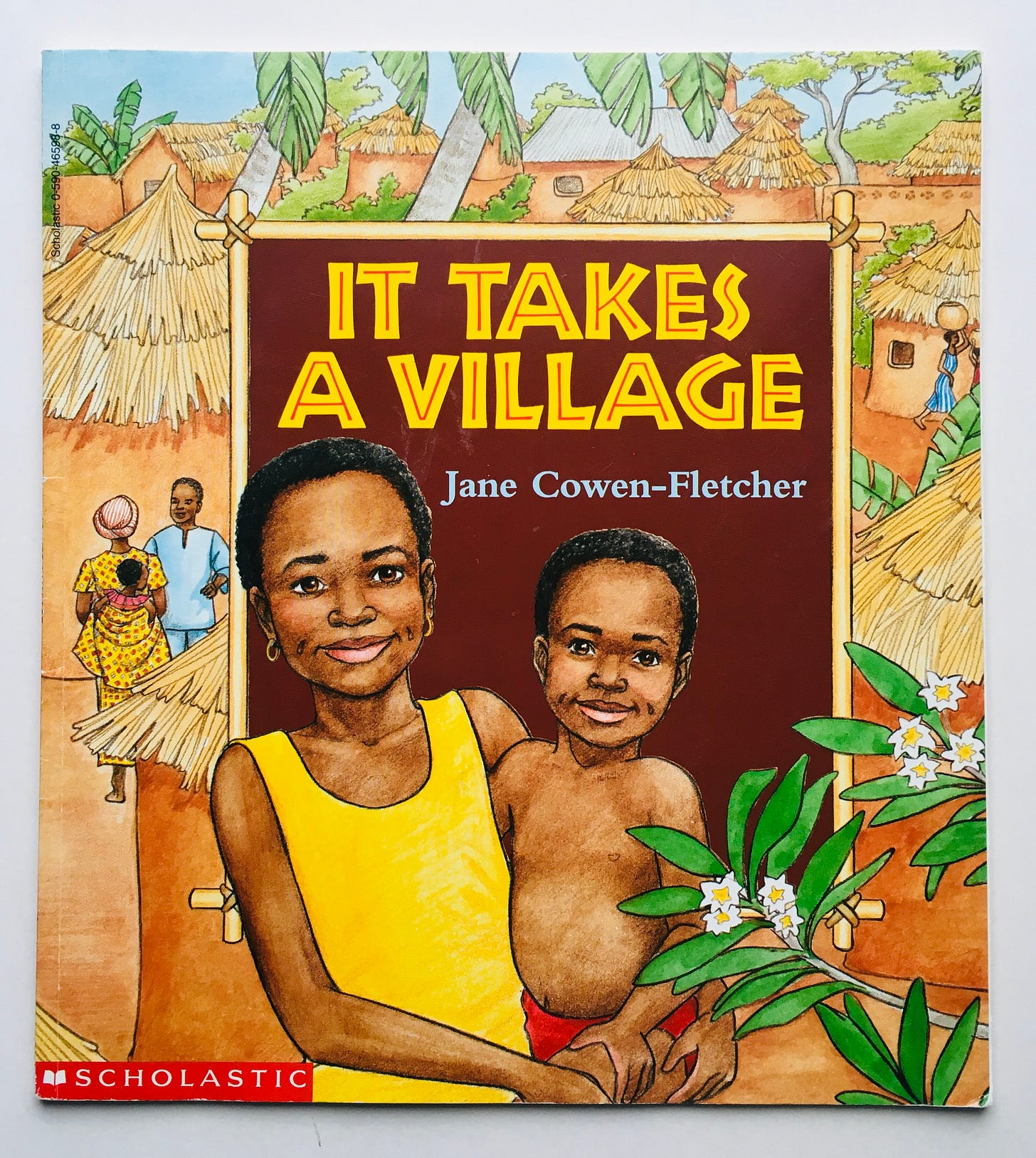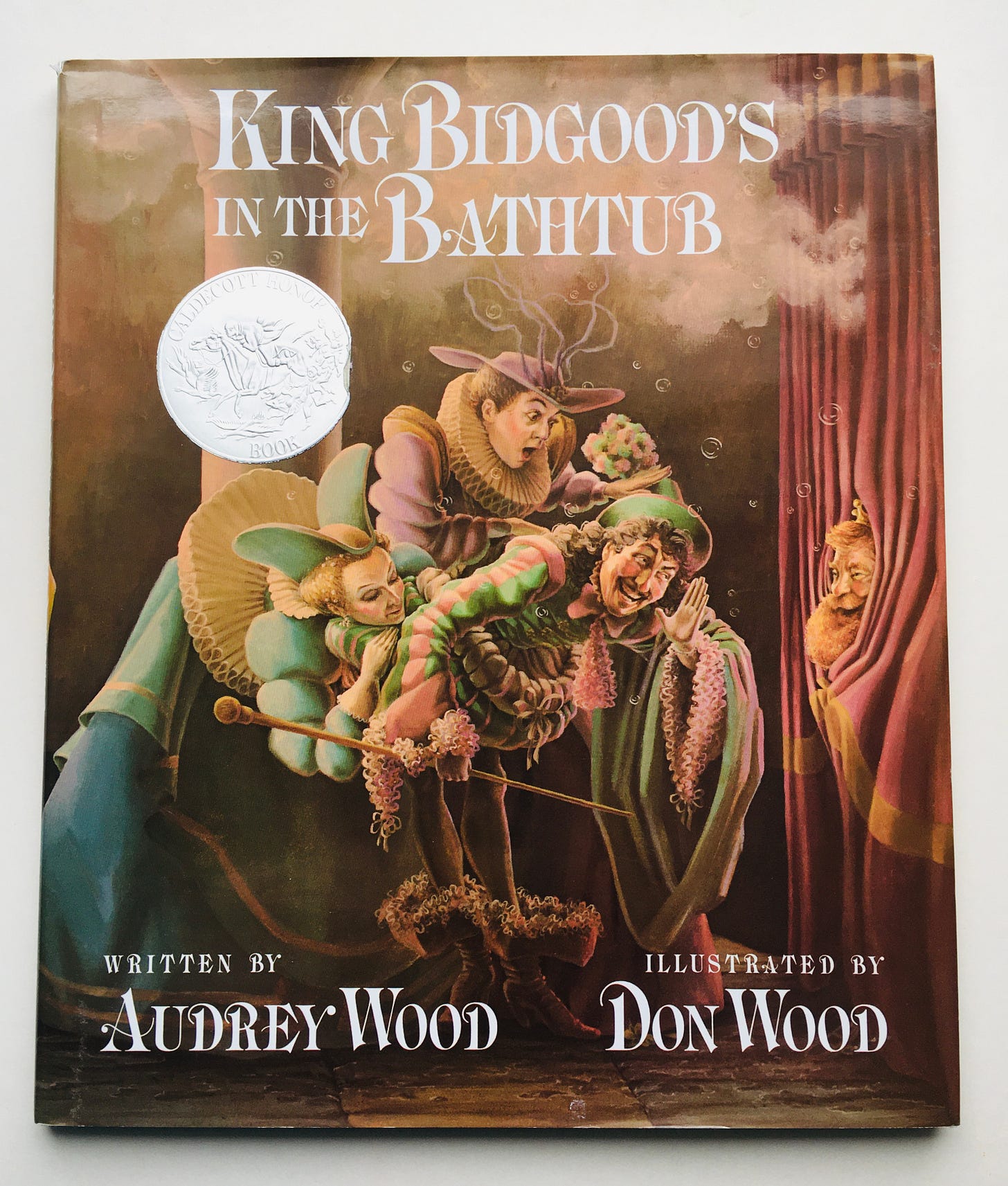Hello, hello! I hope this issue finds you well. Thanks for being here with me today.
And welcome to my new subscribers! If you’d like to know who the heck I am, and what you’ll receive from me when, I’ve written a helpful introduction:
Feel free to hit reply anytime on the issues that find their way to your inbox or send me a separate message at canweread@substack.com with questions, feedback, requests, issues you’d like to see me address, whatever else is on your mind — I love hearing from you, and I respond to every email (because that is my specific compulsion, yes, but also because I relish talking about children’s books and the reading life, if that’s not already obvious).
Also! Further relevant reading
My fellow Bookstacker, Nia Carnelio of the newsletter Not Controversial, recently wrote a post about what today’s children’s literature needs, where she outlines three steps to getting more inclusive books on your shelves (and makes an excellent point about how accessibility plays into representation).
Since this is a topic near and dear to my heart, which I’ve tackled myself in the past, I never tire of reading about it and wanted to share it with you, too:
If you like Nia’s post, check out the whole newsletter, a weekly offering “that talks about things that aren’t supposed to be controversial but still are,” serving up honest discussions about money, spicy lit takes on books — romance fiction and graphic novels, to name a couple — and pop culture critiques. Subscribe here!
Okay, let’s get to the books!
The Lion and the Little Red Bird by Elisa Kleven (1992)
Elisa Kleven is a wonderful human who has created many equally wonderful books (read my April interview to learn about her and her work), and this title is a gorgeously imagined and executed example of just that.
One afternoon, a little red bird spots a lion with “a bushy green tale, as green as the forest,” which makes her so happy she asks the lion why he has this unusual and pretty adornment — but he doesn’t understand her bird language, he simply smiles at her chirping and continues on his way. The next day, after disappearing into a cave for the night, the lion emerges with an orange tail — again, the bird questions the lion, but again, he doesn’t understand. More days pass, each with a new color for the lion’s tail, until one night, a terrible storm comes and sweeps away the bird’s nest, prompting the lion to rush to save his little feathered friend and carry her safely into his cave.
There, she finally learns his colorful secret — huge, beautiful paintings on the walls of all he has seen and loved in the world outside, which he has rendered using his own plain tail.
This simple but by no means simplistic story is full of subtle yet lovely messages about curiosity, friendship, speaking from one’s heart instead of one’s mouth, and loving the world with one’s talents. It’s a sweet choice for toddlers and preschoolers, who will engage with the small amount of suspense and then return again and again for the “surprise” of the lion’s art, rendered here by Kleven in her usual knock-out style with watercolor, pastel, ink, cut paper, and lamb’s wool mixed-media collage — a smorgasbord for little eyes and imaginations alike.
It Takes a Village by Jane Cowen-Fletcher (1994)
Cowen-Fletcher’s warm tale about a young girl who loses her little brother at the market was inspired by the years the author lived in Benin, and, a note at the beginning of the book states, learned from her neighbors “the profound importance of community.”
One morning Yemi tells her mother she will watch her little brother, Kokou, all by herself while her mother sells mangos at the market. It’s a big job, and Yemi feels important until the worst happens: she discovers Kokou is gone. She hurries off to find him, worrying the whole time that he is hungry (he is not, because another woman at the market is feeding him), he is thirsty (he is not, because another woman at the market is giving him a drink), he is frightened (he is not, because another man at the market is showing him how to decorate pots) and so on until she finally discovers him, safe in a small web of people that happily care for and look after him.
Little ones will enjoy the hide-and-seek tone here — will Yemi find Kokou after all? — and see for themselves in Cowen-Fletcher’s simple but compelling colored pencil and watercolor washes, as Yemi doubles back through the market to thank all the people who watched over Kokou when he wandered, that truly it does take a village to raise a child.
The Giant of Jum by Elli Woollard, illustrated by Benji Davies (2015)
The Giant of Jum was a grumpy old grouch
who was constantly grizzling and grumbling
And when he was hungry, he’d slobber and slouch
and say, “Oh, how my tummy is rumbling!”‘Fee!’ he said, and ‘Fi!’ he said, and ‘Fo!’ he said, and ‘Fum!
How I pine, how I wish, for a child on a dish.
Little children are yummy yum yum!’
Thus begins this rollicking, rhyming read-aloud (that my 5yo was obsessed with for several months straight) about a giant who goes off in search of a boy named Jack, with every intention of eating him. But when he finally finds his fantastic little snack, Jack unexpectedly asks the Giant for a ride and is caught entirely off guard by Jack’s gratitude. Still, he pushes onward with his plan, but Jack’s friends, having witnessed the Giant’s kindness, remind him of his better nature, telling him, “You’re such a kind giant, you couldn’t. Nice giants always eat cake!”
This causes the Giant to reconsider his culinary plans and see himself in an entirely new light, prompting the (unwritten) question: can someone “grizzly and grumpy and grouchy and grumbly” change their ways?
You’ll have to read this one to find out, and I don’t think you’ll mind (even if it ends up on repeat, as it did in my house). Davies, who is also an animation director, uses his prodigious visual storytelling skills to great effect here, with his vibrant and — it must be said — totally adorable digital illustrations.
It’s tough not to be won over by this cheerful story and its fun pictures, but then again, why would you try to hold out? Just give yourself over immediately.
King Bidgood's in the Bathtub by Audrey Wood, illustrated by Don Wood (1985)
It has been a long time since I’ve written about our reading routines — and I have to admit that, for the most part, our bath-time reading has come to an end (sniff) — but back when I was spending several nights a week when my spine pressed up against the side of the tub, this title was on heavy rotation.
If you’re familiar with Audrey and Don Wood, you’ll know that whatever book of theirs you pick up is going to be a little bit strange and also a nearly universal hit with small readers, and King Bidgood’s in the Bathtub doesn’t disappoint on either count.
This bizarre tale of a king who won’t get out of the bathtub — and all the people who try to talk him out of it for various reasons, but instead end up in there with him doing battle, eating lunch, fishing, and dancing — is about as weird as it gets (especially when you add in Don’s rich paintings, done in oil on pressed board). Yet its appeal is lasting for the toddler crowd, who will delight in the outcome, brought about, finally, by the page, a small child — a total triumph for anyone who is used to being ruled over by adults.
This one isn’t for everyone (is any book?), and you might dismiss it at first glance, but give it a chance, especially for reading at bath-time — it’s a fun romp that might just sneak up on you.
Thanks for reading today, and thanks for making an effort for the children in your life — every time you read to them, every time you take them to the library, every time you turn on an audiobook in the car, every time you pick up your own book to read in front of them, it matters. You’re doing it. You’re building a reading life. Keep up the amazing work.
Sarah










Thanks for another wonderful post and for including my Lion and his red bird friend!
I want to read about the king who would not get out of the bathtub -- in him, I think I”ll find a kindred spirit. I also loved knowing there are stories like “It Takes A Village” -- it’s so difficult to imagine the world like this anymore and I’d like to read it for myself and then to a small child. I will have to rent the small child for now or borrow one....maybe a lost one who needs a little entertainment until his sister shows up?